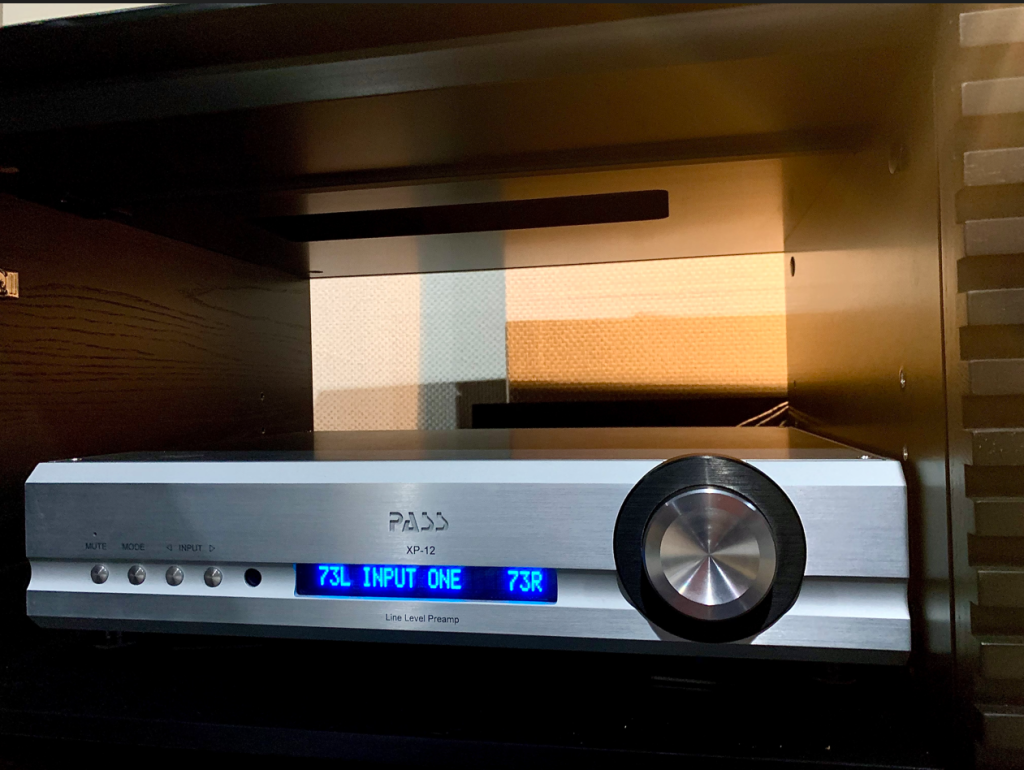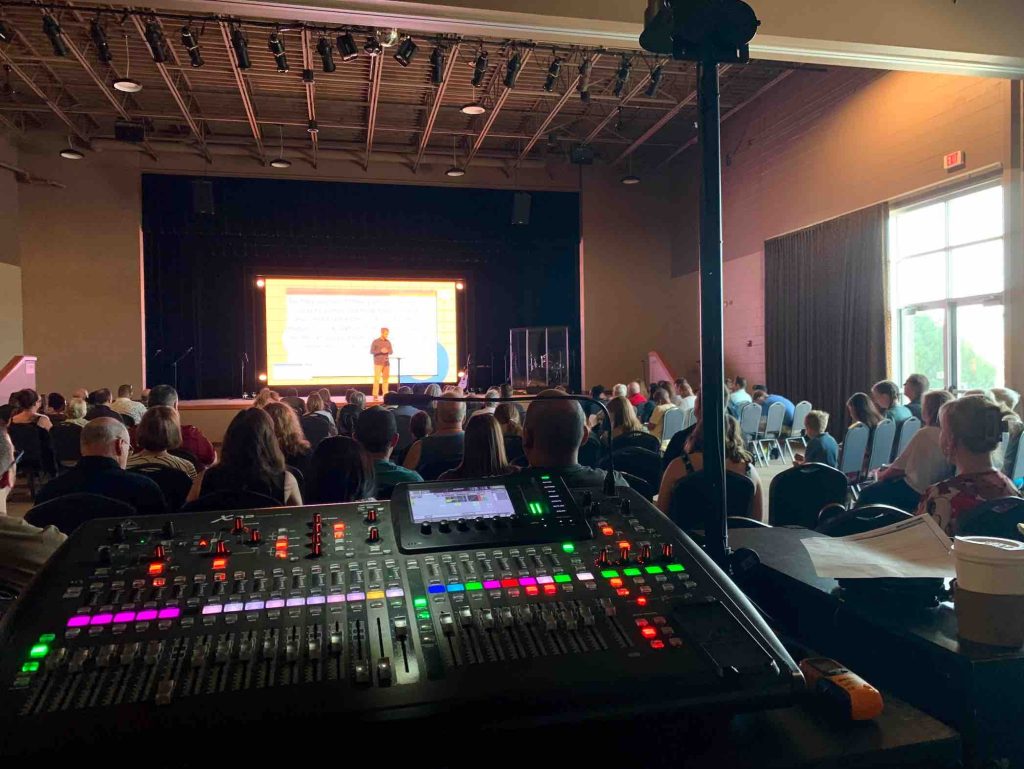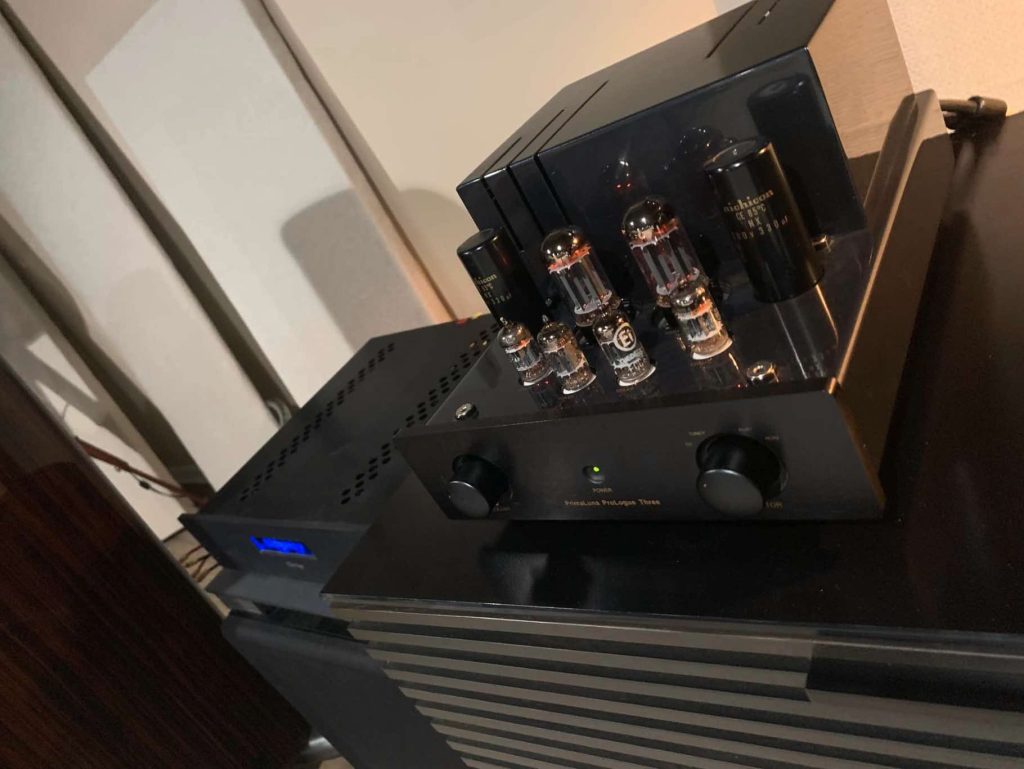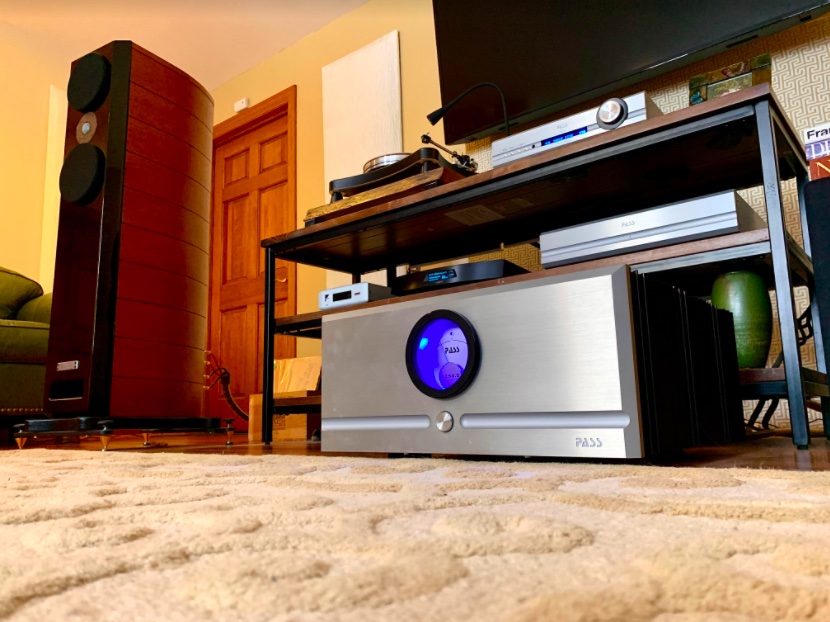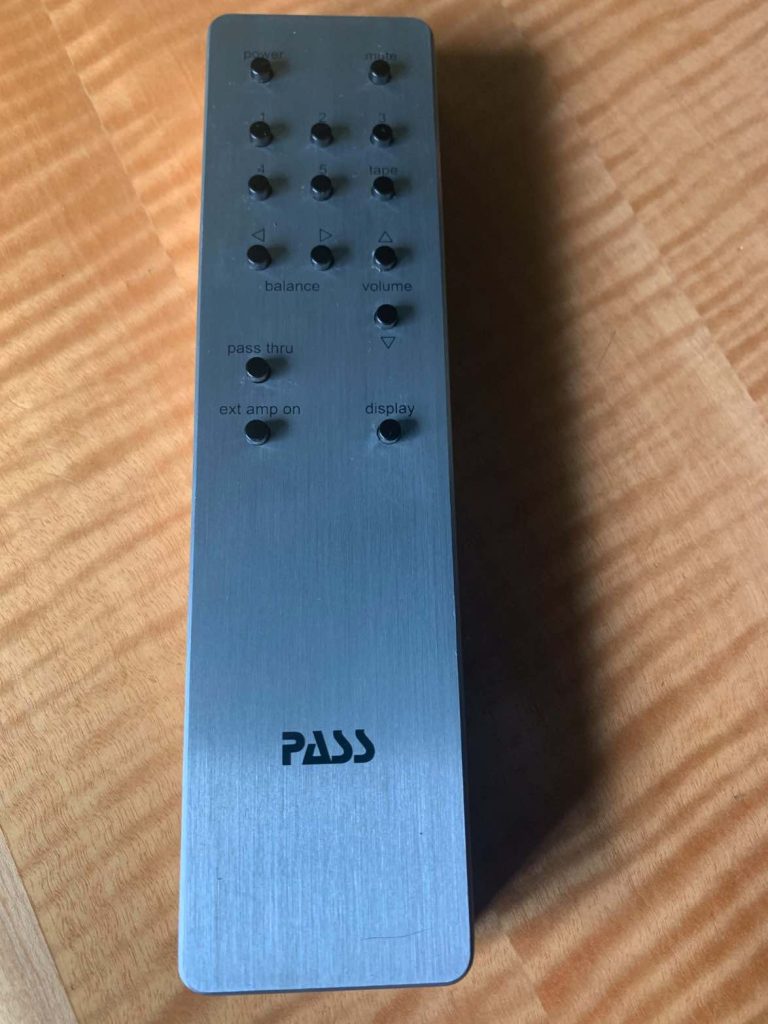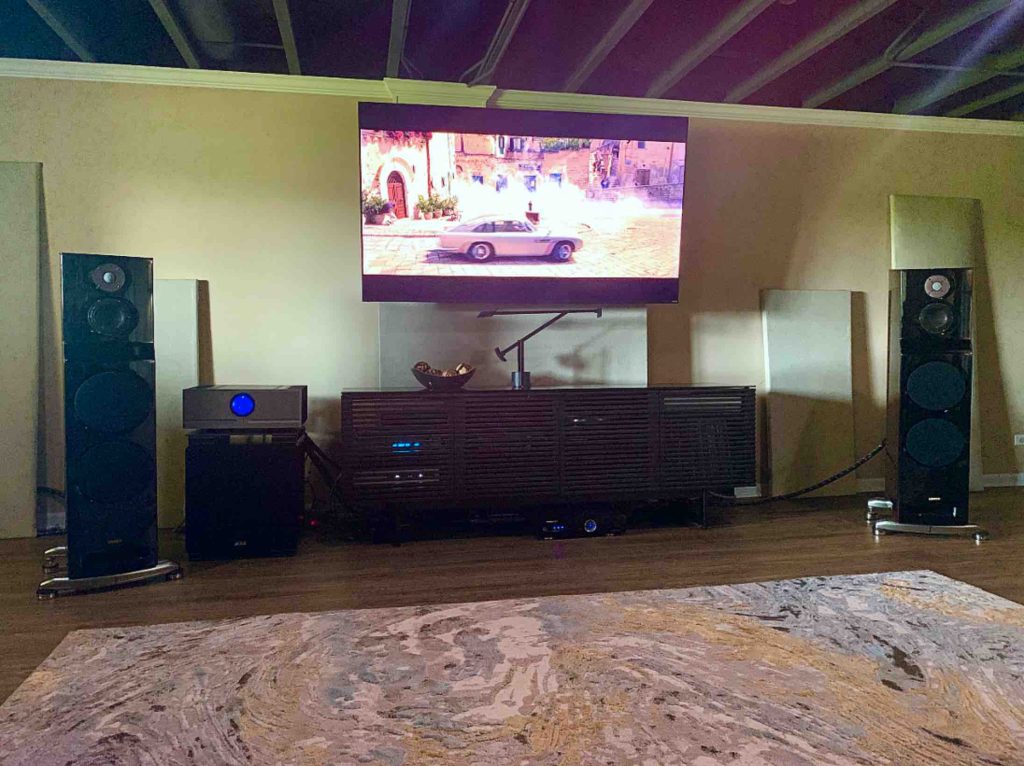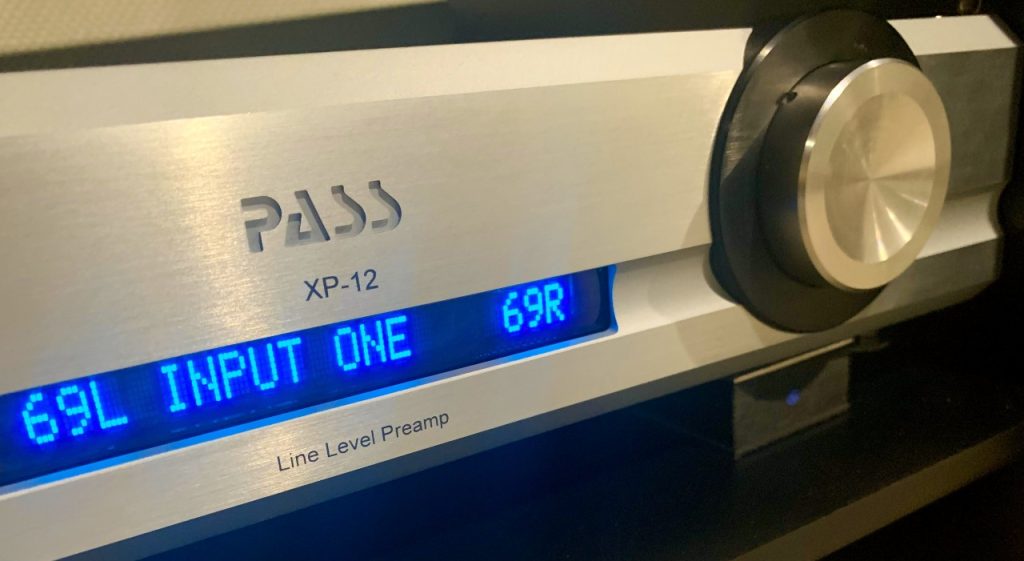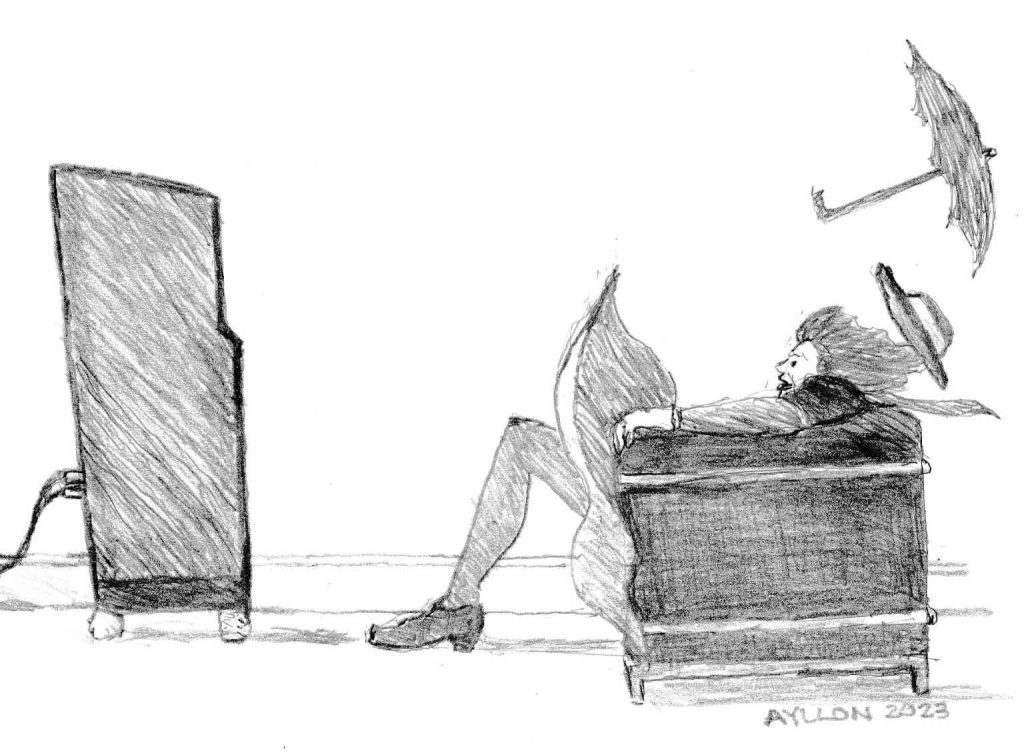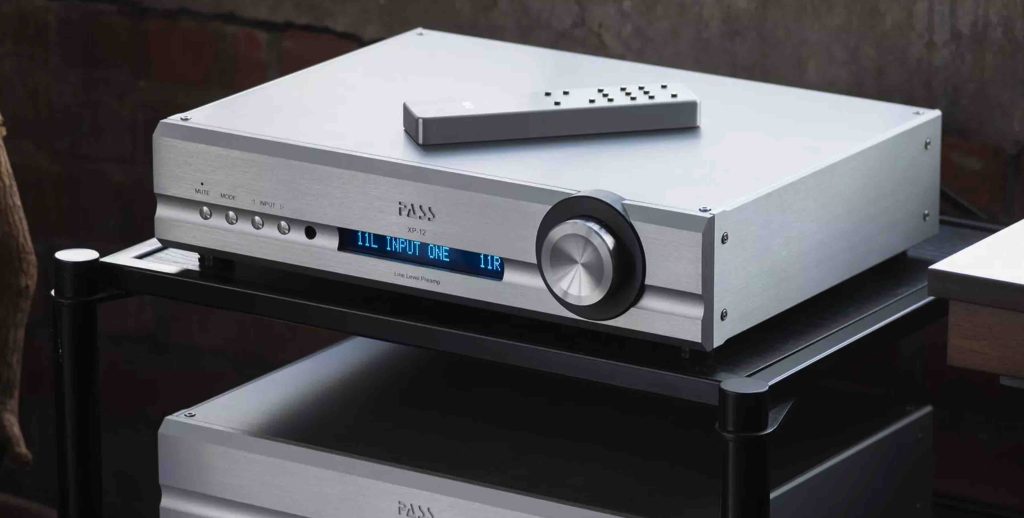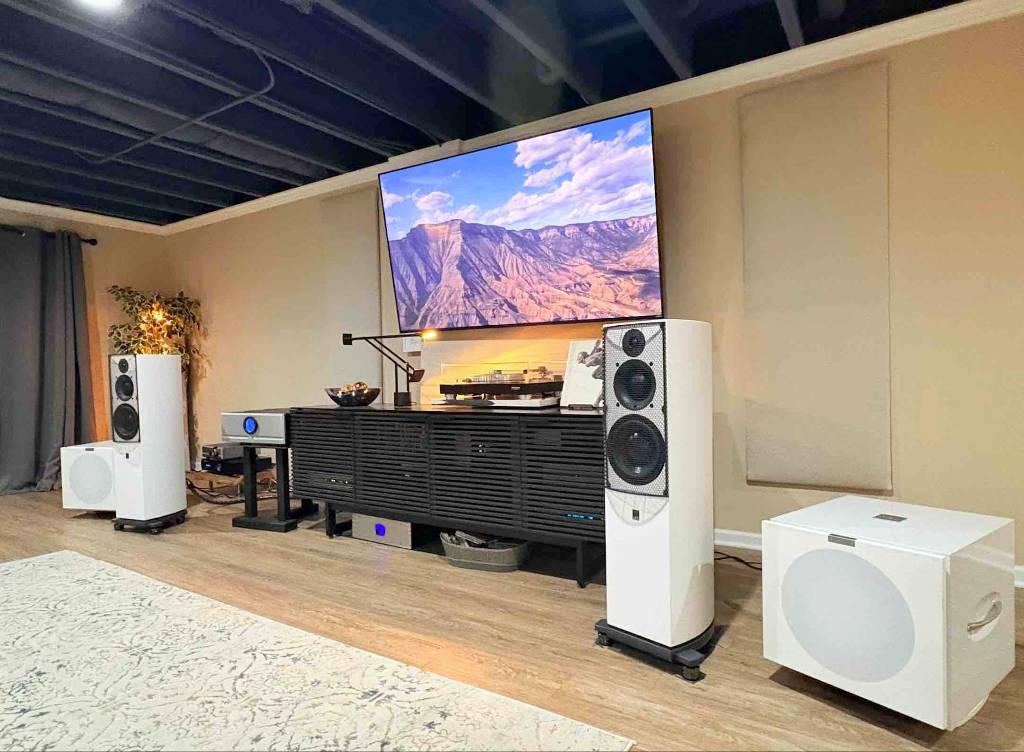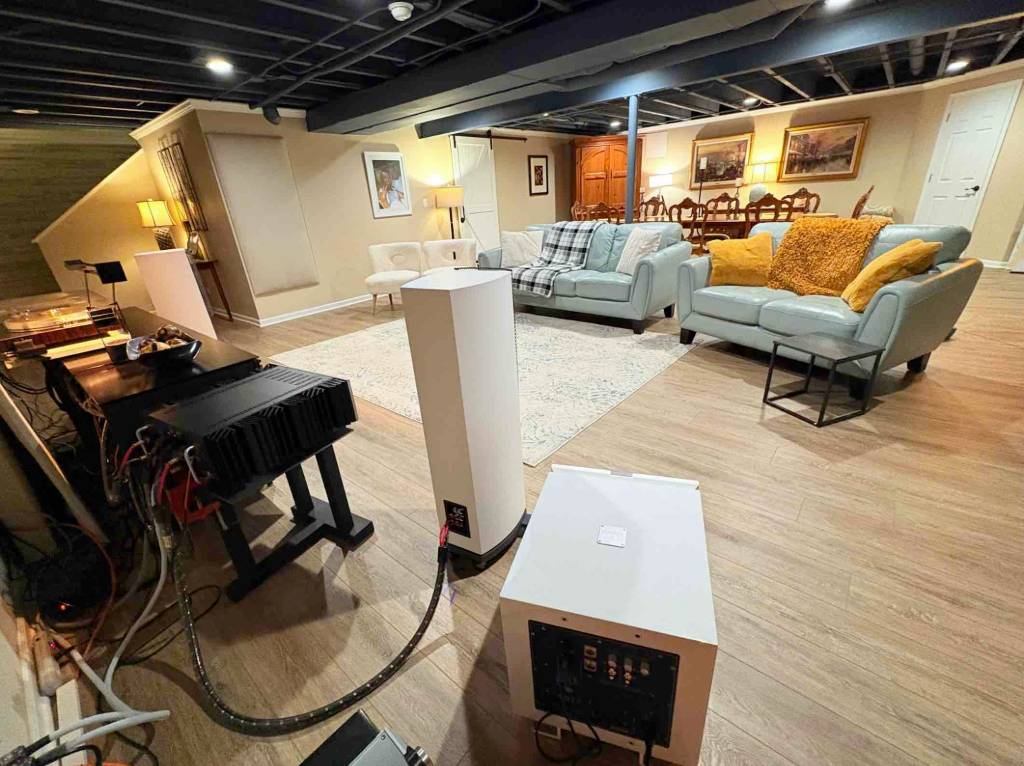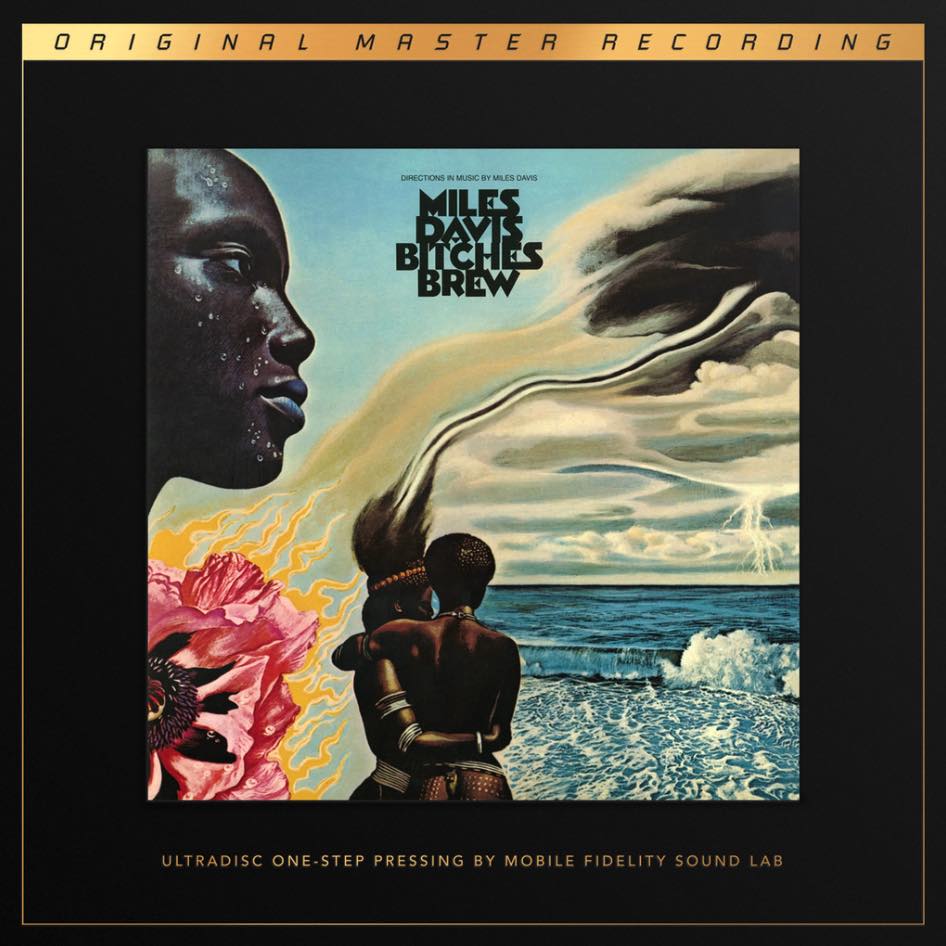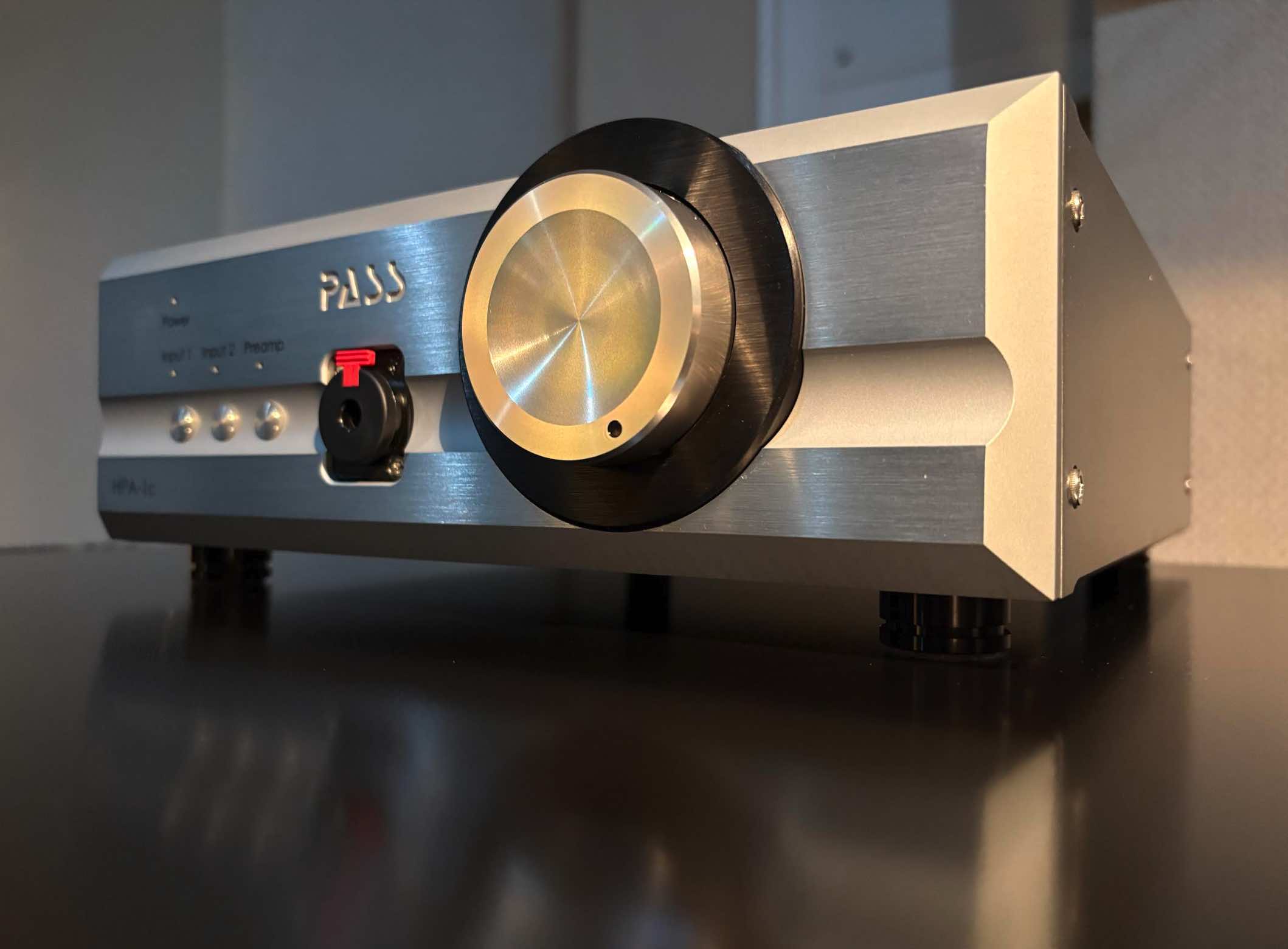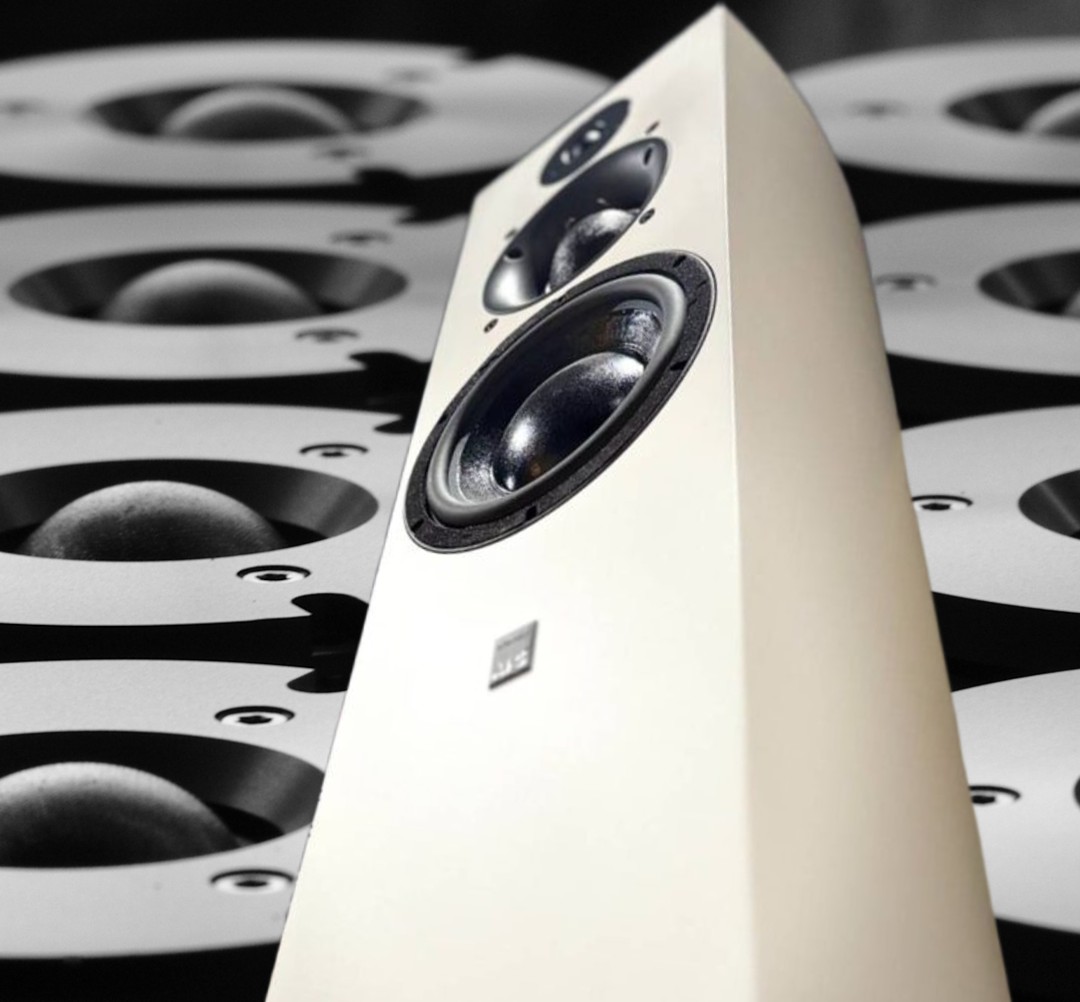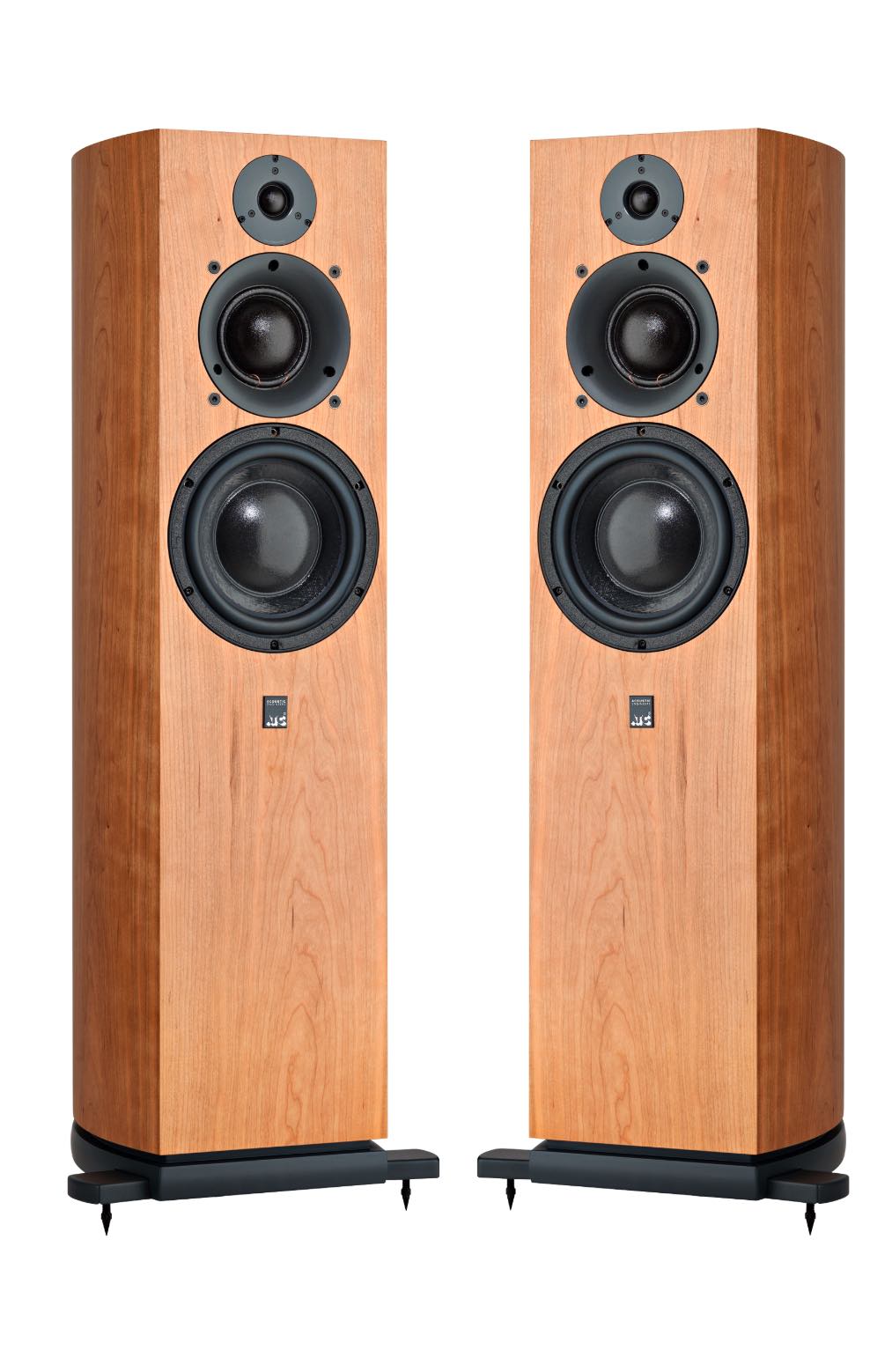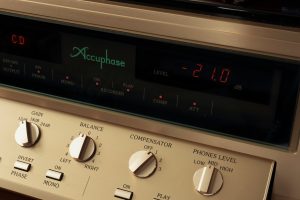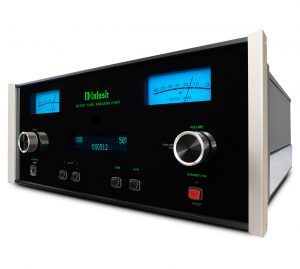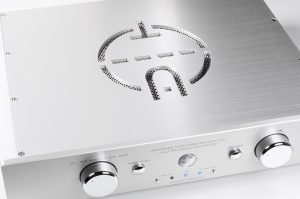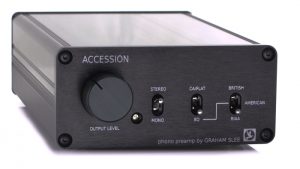I am amazed how my role as an audiophile and audio reviewer informs my volunteer work running the Behringer X32 mixing console at church—and vice versa. Although one focuses on live performances in a much larger and livelier space than my more acoustically intimate home Audio/Visual room, in both cases, I listen closely for issues like sibilance, distortion, and performers sounding correct in their space: the crack of the snare, the thump of the toms, the hierarchy and timbre of vocals with one another and instruments. Using the X32's EQ, gain, and sliders at church, I adjust vocals, drums, bass, and guitar levels relative to one another, a song's tempo, and mood. Boosting the snare and bass during an upbeat passage, for example, gets those hips swaying and infuses the room with infectious energy! Additionally with vocals, I toggle and adjust effects (or reverb), adding the warmth and resonance of a cathedral, but muting them during spoken passages.
In my A/V room at home, the Pass Labs XP-12 preamplifier is my reference control center. It doesn't have the EQ, sliders, or the myriad mixing features of the X32 but, nevertheless, it remains a powerful tool, equally useful for evaluating audio equipment, software, and accessories—or—for delivering an exquisite heavenly aural experience.
However, it wasn't always that way.
Tube-Based Sauciness
"Give me more sauce!" Carlos, a former worship leader who liked his effects extra thick, had bellowed at worship rehearsals. Without them, vocals lacked luster—like eating a hotdog at Wrigley Field sans mustard and condiments.
Back on the home front for several years, vacuum tubes had that same saucy impact on my two channel system; my hot-rodded Prima Luna dual-mono, non-inverting tube preamplifier, the Prologue 3—together with the tube-based Lampizator Big 7 DAC—imbued a sumptuous sheen and a glorious glow to music while shaving off harsh edges associated with digital recordings. I imagined spending my golden years tinkering, trading tubes, and tickling my ears with their aural magic. But three years ago, I kissed them goodbye.
The reason? Pass Labs—and their XP-12 preamplifier in particular. I had an opportunity to review their X250.8 amp (you can read that review HERE) and XP-12 preamplifier, and as part of a package deal, I also received their XP-17 phono preamplifier to evaluate. I was very impressed, but what really sold me was comparing my hot-rodded PrimaLuna Prologue 3 preamp with the XP-12. Up until then, I considered my Prologue both linear and organic, enhancing vocals and instruments like added effects on the X32. In fact, at AXPONA 2018, Prima Luna's U.S. importer, Kevin Deal, had insisted that their Prologue 3 would fare well in blind A/B tests versus pricier preamps like the $15,0000 Destination Audio 76 that I'd reviewed (I was unable to substantiate this, as the DA 76 was no longer in my care). However, when I carefully scrutinized the Prologue's presentation of HD movies and music tracks versus the XP-12, it was clear that it glossed over bits of detail that the XP-12 delivered and, conversely, the XP's heightened clarity was not strident or sibilant, but unveiled precious information that I really wanted to hear.
Some stalwart tube snobs seemed shocked, if not offended, but I sold both the Prologue 3 and Lampizator DAC (the latter was replaced by the solid state Schiit Audio Yggdrasil), and since then the Pass Labs XP-12 has remained a linchpin in a system that's evolved and lived in two homes (you can read about the custom build of the A/V room in the latter home HERE).
Wayne Colburn (image from "Burning Amp 2017 - Wayne Colburn." Linear Integrated Systems YouTube channel)
Money and Preamps to Burn
Its designer, Wayne Colburn, was hired by Nelson Pass first at Threshold, then later at Pass Labs, where his preamp and phono stage designs have been prolific and sublime. (You can read more about Nelson in my Pass Labs X250.8 amp review HERE and Wayne's story at my XP-17 review HERE.) His single chassis XP-12, at $6100, is Pass Labs' excellent, introductory level model in their XP preamplifier series. Their two chassis model, the XP-22, lists for $9975, while their three chassis XP-32 retails for $18,375. Moderately priced in comparison, the XP-12 derives some of the trickle down technology from Pass Labs' flagship, dual chassis Xs preamplifier that lists for a lavish $38,000. Frankly, relatively speaking, the XP-12 delivers astonishing performance for its price.
Image courtesy of Pass Labs
'Spiritual Unity' and What Are All Those Buttons For?
Low slung and sleek at 17"W x 12.5"D x 4"H, upfront the XP-12 boasts, left to right, an array of four small, shiny round metal input and volume buttons, followed by a light sensor and a blue-lit, alphanumeric display residing in a 3/4" wide machined channel running across, two-thirds of the way down the face of its CNC-milled, brushed aluminum chassis. Above the display, the name "PASS" is engraved in large stylized letters, and "XP-12" in the next line in small Helvetica font (the words, "Line Level Preamp" appear in that same small print below the display). To the right, there's a large, steely volume knob surrounded by a black circular ring. Its clean and contemporary aesthetics conjures words by the acclaimed American architect, Frank Lloyd Wright:
"Form follows function—that has been misunderstood. Form and function should be one, joined in a spiritual union." (Gurgenheim.org)
Now about those shiny buttons in front: at far left is Mute; toggling it turns mute on or off; to its right, the front panel mode switch turns the display's lighting to Bright, Dim, and Off. Using any functions with the display "off" will briefly bring the display back to its dim setting. The two arrowed select switches (labeled with left and right pointing arrows) activate its active inputs, one through five. Input five is linked with the Home Theater, or Unity Gain function. Pressing this input rapidly cranks the XP-12 up to "Unity"—or full (Theater Pass Through) volume—to allow another input device to control volume.
Frankly, Input Five scares me—which is why I never leave the XP-12 remote lying around when we have visiting friends or children, lest probing fingers accidentally trigger the theater pass through (or, ahem, "pass thru") mode! Needless to say, if this is pressed, it is extremely important that the input source's gain be set to minimum; if not, the resulting volume could be damaging to your ears and speakers! To help reduce the likelihood of calamity, when "pass thru" is selected, the volume doesn't instantaneous hit Unity, but ramps up to 89 over several seconds, giving you a few moments to stop the ramp up sequence by pressing any button on the remote (read more in its manual HERE).
Image courtesy of Pass Labs
On its rear panel, left to right, are an on/off switch with an IEC 320 power cord receptacle below, a pair each of unbalanced (RCA) and balanced (XLR) outputs, three RCA inputs, and two XLR inputs. Solidly in build, the chassis rests on four small rubber feet.
"The new XP-12 starts with a new power supply," its literature reads. "It uses an efficient toroidal design with both an electrostatic and Mu metal shield along with vacuum impregnating and epoxy fill," resulting in an extremely quiet transformer "both electrically and mechanically." The power supply circuitry that also resides in its single machined aluminum chassis, is designed for lower noise with additional filtering, and employs the single stage volume control borrowed from their $38,000 Xs line preamplifier, resulting in "one hundred 1 dB steps with lower noise and distortion while removing some signal path parts." (Passlabs.com)
The XP-12's gain circuitry continues to use Pass Labs' favorite transistors from Toshiba, according to the XP-12 owners manual, and features a larger, higher biased output stage that's similar to the Pass Labs Xs preamplifier auto bias, making multiple and longer cable runs easier to drive. It also facilitates simplification of their single-ended output circuitry while increasing performance. The result, they claim, makes for a more quiet, musical, neutral, and versatile means to control your system.
True to form, the XP-12 is stone cold silent right up to the moment you engage your source—and then it stuns with its sublime, transparent sonics! Linked to the Pass Labs X150.8 amp and out to my Usher ML-802 loudspeakers with Straight Wire cables, it serves up sound with great clarity, balance, and finesse, bathing the listener with the lush and nuanced Pass Labs' house sound—one which is rich and a few ticks warmer than neutral (you can read more about my room and equipment by clicking on my byline at the beginning of this article).
A Hefty Handful
At 7 3/4" L x 2" W x 3/4" D and roughly one pound of rectangular brushed aluminum, the XP-12 remote is certainly no fragile, wafer-thin handset! It features the aforementioned mute, input selection, volume, and display settings, but also has buttons to select the left and right channel balance, pass through (pushing it twice sets the XP-12 to input 5 and ramps up to volume step 89 and must be pressed again to exit pass through mode), a tape setting (not found on the XP-12, but on other preamps), a power button that doesn't affect the XP-12, but targets other Pass Lab products, and an "Ext Amp On" button that applies 12V DC to a two conductor 3.5mm TS (tip-sleeve) connector on the rear of the XP-12 control chassis to trigger additional components—like an extra amp, for example. Two AAA batteries are stored inside under the remote's back plate with four 4-40 Phillips flat head screws.
Balanced is Better for Outputting the XP-12 to an Amplifier
Here's an interesting side note: although connecting the XP-12 to an amp via unbalanced RCA interconnects works just fine, Pass Labs recommends using of the balanced output mode in the XP-12 preamplifier to an amplifier whenever possible, offering the following explanation in its owner's manual:
Balanced input to power-amplifiers will typically retain the character of the input mode, but offers less distortion, less noise, more gain, and more voltage swing, without compromising the sound. With balanced operation, the common mode rejection of the preamp reflects the intrinsic common mode rejection of the topology, the matching of the gain devices, and the matching of the attenuator channels. In this case we have been able to keep the total mismatch to about .1%, for a common mode rejection of approximately -60 dB.
Towards that end in my system, the XP-12 outputs into the X150.8 using Straight Wire Crescendo 3 balanced XLR cables. Additionally, the Schiit Audio Yggdrasil DAC (which also performs better with balanced cables) and XP-17 phono preamplifiers both feed into the XP-12's inputs using silver-copper Straight Wire Virtuoso R2 balanced XLR interconnects.
The XP Experience
With the XP-12 governing preamplifier duties, the soundstage, detail, depth, and vividly viscerally of HD movies, shows and music videos are an ongoing source of pleasure and amazement for us at home. Be it the creaks of timbers straining, then snapping—followed by a thunderous building collapse, the engine whine and screeching tires of James Bond's Aston Martin, or Andrea Bocelli's bewitching baritone tenor in "Perfect Symphony," it's a sensory treat that keep us glued to our couch way past bedtime.
Our A/V bliss aside, the Pass Labs XP-12 has been an invaluable tool in evaluating numerous review subjects, providing me a precise reference and a clear purview into the varied and often subtle nuances with its wondrously transparent delivery. Below, you can view links to some of my reviews where the XP-12 played an integral role:
- Pass Labs X250.8 amplifier
- Pass Labs XP-17 Phonostage
- Torus Power AVR Elite 20
- Ayre QB 9 Twenty DAC
- Purity Audio Design J-DAC
- Usher R-1.5 Stereo Amplifier
- Usher Audio ML-801 Loudspeakers
- Straight Wire Crescendo 3 Speaker Cables
- HDPLEX H1 V3 Fanless Case
- iFi NEO Stream Network Audio Streamer
- Carbide Audio Isolator Feet
- A/V RoomService Equipment Vibration Protectors
- Home Audio Fidelity Crosstalk and Convolution Filters
But evaluating tool role aside, how does the XP-12 perform in a listening session?
Evenings at the Village Gate: John Coltrane with Eric Dolphy was recorded on a single ribbon microphone by engineer Aldo Anderson as a sound test, and never intended for commercial release (in his twenties then, Anderson was the Village Vanguard's sound guy and would later work for Nina Simone and Bob Dylan). However, retrieved from the archives of the New York Public Library for the Performing Arts, this recording not only demonstrates how mic placement, acoustics, and proper production can impact audio quality, but serves as a splendid snapshot of Coltrane's and Dolphy's brilliance at the peak of their transition from "hard driving, modal jazz to the more avant garde, harmonically free approach" that Coltrane would later embrace (''Evenings at the Village Gate: John Coltrane with Eric Dolphy Review by Matt Collar." allmusic.com). In "When the Lights Are Low," Dolphy plays the bass clarinet with soul and flare, conjuring Sonny Rollins, before untethering from harmonic restraint and soloing in frenetic freeform. (Ibid) Appearing further away from the mic, Coltrane and his soprano sax spellbinds as he launches into a blindingly brilliant shredding session (Evenings at the Gate: John Coltrane with Eric Dolphy (Live). Qobuz 192kHz, 24-Bit. Impluse! 1961). Somewhat dissonant and lo-fi, nevertheless it's a recording that jazz and audio aficionados should hear at least once; after all, most of us are not in it merely for good sounding equipment and recordings, but for the music, and the Pass Labs XP-12 delivers it well, warts and all.
Shifting gears, in "Finale con brio. Allegro fermo," the timber, rich tonal textures and crisp, clean edges of three time Grammy Award winner Hilary Hahn shines through as she bows and—occasionally—plucks her violin (Hilary Hahn. Ysaÿe. 6 Sonatas for Violin Solo, Op. 27. Qobuz FLAC 96kHz, 24-Bit. Deutsche Grammophone (DG), December 2022). Her ease, confidence, and command of her instrument are apparent in her fresh take on Eugène Ysaÿe, who was widely regarded as one of history's premiere violinists.
"These sonatas are truly hypnotic, and when we'd wrap for the day, I'd step into the winter air in a haze," Hahn later reflected on their recording sessions. "My brain re-harmonized by the tonalities that had vibrated through my jawbone: a sound bath if ever there was one." (imgartists.com)
And the XP-12 delivers them, iridescent and pulsating with life, with uncanny presence and realism.
If it's grunge, slam, drums, and electro-funk you want, Norman Quentin Cook (AKA Fatboy Slim) is your guy, "Mi Bebe Masoquista" is your song, and the XP-12 serves it up—vivid, bold and brash (Fatboy Slim, Palookaville. Qobuz FLAC 44.1kHz, 16-Bit. Astralwerks, October 5, 2004). Kicking off with Justin Robertson's electric guitar sample, to the redundant, gritty vocals—
My masochistic baby went and left me
My masochistic baby went and left me
My masochistic baby went and left me
Oh oh oh oh oh
—they're off to races, enjoined by successive layers of drums, bass, synthesized beats, and scratched voice samples. Panning left, center, and right, it's mesmerizing—especially if you're out of coffee and in need of caffeine! As such, the Pass Labs XP-12 preamp is an efficient espresso machine, delivering your fix raw and unfiltered.
XP-12 Specifications
- Power consumption: 30 watts
- Gain: 9.3dB
- Balanced Frequency response: +/- 0.05 dB 10Hz to 20kHz, -1dB @ 100kHz
- Crosstalk: > 100dB
- Residual Noise: 15uV 10 – 30kHz
- THD: < 0.001 @ 1V 1Khz
- Dimensions: 17"w x 12.5"d x 4"h
- Weight: 20 lbs.
"It's Supercalifragilistic-XP-alidocious!" - Mary Poppins on the Pass Labs XP-12
Now if Mary Poppins were an audiophile, she'd probably say that the Pass Labs XP-12 preamplifier is "supercalifragilisticexpialidocious." Well, maybe not, but the XP-12 would certainly blow wind up her skirt—as it does mine (figuratively speaking, of course)! It does a superlative job of executing a preamplifier's charge—to "amplify extremely weak electrical signals before they are fed to additional amplifier circuits" (merriam-webster.com)—without adding undue noise or coloration. Moreover, the Pass Labs XP-12 is extremely versatile. It can sing with celestial sirens and slug with the beastliest brutes in the guttural grunge—and it does so with great panache!
So, while it doesn't have anywhere near the bells and whistles of a Behringer X32 console (I mean, really, what home audio preamp does?), let's be real: what the Pass Labs XP-12 preamplifier has works extremely well, making it an indispensable audio evaluation tool and purveyor of aural bliss.
Photo courtesy of Pass Labs
In a time where high-end audio prices are skyrocketing, bordering on the obscene, the XP-12 affords you a greater portion of the upper end experience for a mid-fi price. It's like getting to drive a Ferrari for the price of a Toyota. I like that! And this is why I not only recommend the Pass Labs XP-12 preamplifier, but keep one in my reference system.
XP-12 Preamplifier
Retail $6100
Pass Labs




